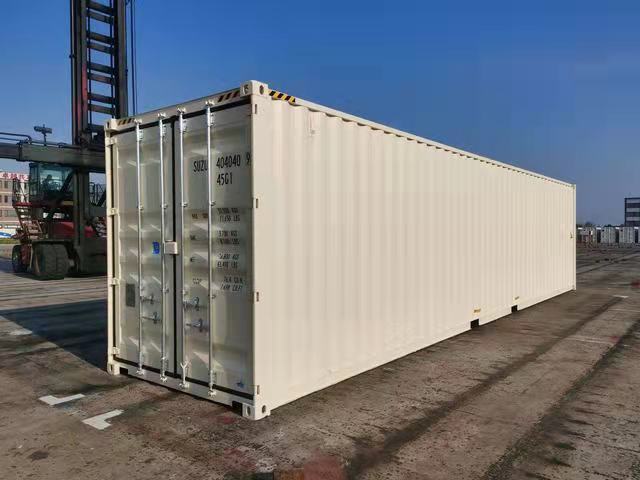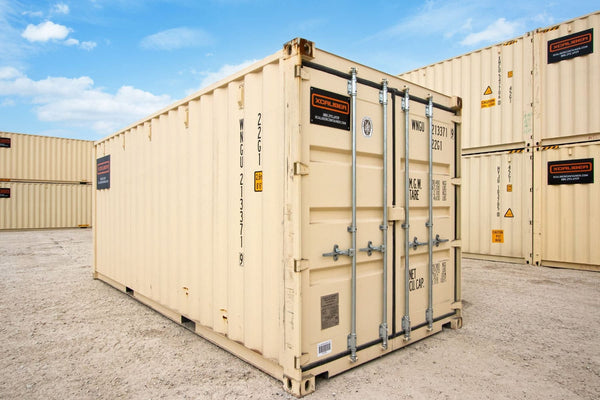The Ultimate Overview to Selecting the Right Delivery Container for Your Requirements
When it concerns selecting the right delivery container, understanding your details needs is crucial. You'll wish to take into consideration elements like dimension, type, and material to assure you make the finest choice. From typical sizes to specialized options, there's a lot to check out. And also, budgeting for both the container and any kind of modifications can make a big difference. Allow's break down the essential elements to assist you discover the excellent suitable for your needs.
Understanding Shipping Container Sizes
When you're choosing a shipping container, comprehending the different sizes readily available is critical for making the right decision. Shipping containers generally are available in conventional sizes of 20 and 40 feet, however you'll likewise discover various other measurements. Recognizing the dimension you require depends upon what you prepare to store or transport.If you're moving smaller sized things, a 20-foot container could be excellent, while bigger deliveries usually call for a 40-foot container. Bear in mind that the height can likewise vary; high cube containers offer extra vertical area, which can be helpful for taller goods - Lease New Shipping Container 40' x 8' x 9’6".Before choosing, determine your cargo, and take into consideration exactly how much room you'll require for packing and unloading. Constantly aspect in potential future requirements-- going with a somewhat larger container might save you headache down the line. Eventually, picking the best dimension will boost effectiveness and assure your products are secure throughout transit
Kinds Of Shipping Containers Available
There are numerous sorts of shipping containers readily available, each developed for specific functions and cargo requirements. The standard completely dry container is versatile, best for general freight. If you're shipping disposable items, take into consideration a cooled container, which maintains a controlled temperature level. For large items, high cube containers use added height, fitting taller loads.If you require to transfer heavy equipment or devices, flat rack containers supply a sturdy base without wall surfaces. Meanwhile, open-top containers enable simple loading of high freight, with a detachable tarp covering for protection. If you're searching for adaptability, take into consideration a collapsible container that can be easily kept when not in use.Lastly, specialized containers like storage tank containers are made use of for liquids, while vented containers are designed for bulk cargo that requires air flow. Understanding your freight type will help you select the ideal container to fulfill your delivery needs effectively.
Material Considerations for Toughness
When picking a shipping container, the product plays an essential duty in its longevity. You'll want to weigh the benefits of steel versus light weight aluminum, specifically regarding corrosion resistance. Recognizing these factors can help you make an extra enlightened option for your shipping needs.
Steel vs. Aluminum Containers
How do you pick in between steel and light weight aluminum containers for your shipping needs? Begin by thinking about toughness. Steel containers are durable and offer excellent toughness, making them excellent for hefty tons and harsh problems. They withstand damage from impacts and are often much less pricey, which can be a major variable for budget-conscious buyers.On the various other hand, aluminum containers are light-weight, which can save you on delivery costs. They're less complicated to navigate and are a terrific choice if you require to carry goods often. Light weight aluminum is typically extra costly and much less robust than steel. Evaluate your specific requirements carefully, consisting of weight, cost, and the kind of freight you'll be shipping, to make the appropriate choice for your circumstance.
Corrosion Resistance Aspects
Choosing the best product doesn't simply entail weight and cost; rust resistance plays a considerable duty in toughness. When selecting a delivery container, consider the atmosphere it'll encounter. Steel containers, while solid, can rust otherwise effectively treated. Try to find options with protective layers or galvanization to enhance their life expectancy. Light weight aluminum, on the other hand, uses natural deterioration resistance, making it perfect for seaside areas or moist conditions. Nonetheless, it can be extra expensive. Furthermore, assess the container's use-- if it'll be exposed to chemicals or harsh weather, prioritize materials that can stand up to these problems. Spending in a corrosion-resistant container currently can conserve you from pricey repair services or replacements down the line. Select intelligently for lasting advantages.
Adjustments and Personalization Options
Shipping containers aren't simply for moving products; they can be transformed to meet your details requirements through various alterations and personalization options. You can convert a standard container right into a relaxing office, a momentary retail shop, and even a personal gym. The opportunities are virtually endless.Think concerning including windows, insulation, or air flow to enhance comfort. You could also take into consideration electric wiring, pipes, or perhaps custom-made shelving to enhance capability. If safety's an issue, enhanced locks can offer tranquility of mind.For aesthetic allure, you can paint the container or include a distinct layout to make it stick out. Don't ignore floor covering choices-- whether you want long lasting plywood or something extra advanced, it can boost the space.Ultimately, tailoring your delivery container to suit your requirements can boost usability and develop an unique atmosphere that mirrors your style.
Analyzing Your Transportation Requirements
When it comes to utilizing your customized delivery container, comprehending your transportation needs is vital. Start by identifying what you'll be delivery-- whether it's hefty devices, retail items, or personal products. Each type of freight has different needs relating to size, weight, and accessibility.Next, take into consideration the range and mode of transportation. Are you delivering locally, across the country, or globally? This impacts the container's layout and capability. If you're utilizing trucks, guarantee your container fits typical measurements for easy loading and unloading.Additionally, think of transit conditions. Will your products need special security from weather condition or temperature variations? If so, you may require insulation or ventilation attributes in your container.Lastly, examine how commonly you'll be transporting goods. Frequent shipments may require an extra sturdy and functional container to fulfill recurring needs. By attending to these aspects, you'll be well-prepared to select the best shipping container for your needs.
Budgeting for Your Delivery Container
Establishing an allocate your delivery container is vital for making sure a smooth getting procedure. First, identify exactly how much you can afford to spend. Prices can vary significantly based on size, condition, and type. New containers typically set you back extra, but used ones can provide significant savings.Next, take into consideration any kind of added prices you could sustain, such as transport charges, shipment fees, and alterations. If you intend to customize the container, aspect in those expenses also. Research study different distributors to compare prices and discover the finest deal that fulfills your needs.Don' t fail to remember to consist of any type of permits or regulations that might relate to your acquisition and use the container. By clearly detailing your budget plan, you'll be much better prepared to make informed decisions, ensuring you get the right container without breaking the bank.
Upkeep and Take Care Of Durability
To assure your delivery container lasts for many years, normal maintenance is crucial. Beginning by checking the outside for rust, damages, and damages. If you find any kind of issues, address them quickly to avoid more deterioration. Tidy the container occasionally, both within and out, to remove dirt, particles, and moisture that can result in corrosion.Ensure the doors seal effectively and lubricate the hinges to prevent corrosion and sticking. If you're using the container for storage space, consider including air flow to reduce moisture and mold growth. For extra security, use a rust-inhibiting paint or sealer annually.If your container's located in a severe atmosphere, like seaside locations, you could require to enhance maintenance regularity. Watch on the flooring, as well; any type of indications of wear must be fixed immediately. With these easy steps, you'll extend the life of your shipping container significantly.
Often Asked Concerns
Exactly how Do I Find a Reputable Shipping Container Vendor?
To discover a trustworthy delivery container vendor, start by looking into on-line testimonials, requesting suggestions from pals or market contacts, and comparing rates. Constantly inspect their credentials and Buy New Shipping Container 40' x 8' x 9’6" guarantee they offer quality containers that satisfy your demands.

Can I Lease a Shipping Container Rather Than Acquiring?
Yes, you can most definitely lease a shipping container as opposed to getting one. Numerous suppliers supply rental choices, which can save you cash and supply flexibility if you just require it for a short duration.
What Permits Are Required for Container Positioning?

Are Shipping Containers Weatherproof and Suitable for Outdoor Storage?
Yes, delivering containers are usually weatherproof, created to hold up against harsh problems. Their durable building keeps your items secure and completely dry, making them ideal for outside storage. Just guarantee proper air flow to stop wetness accumulation inside.
How Do I Transfer a Shipping Container Once Purchased?
